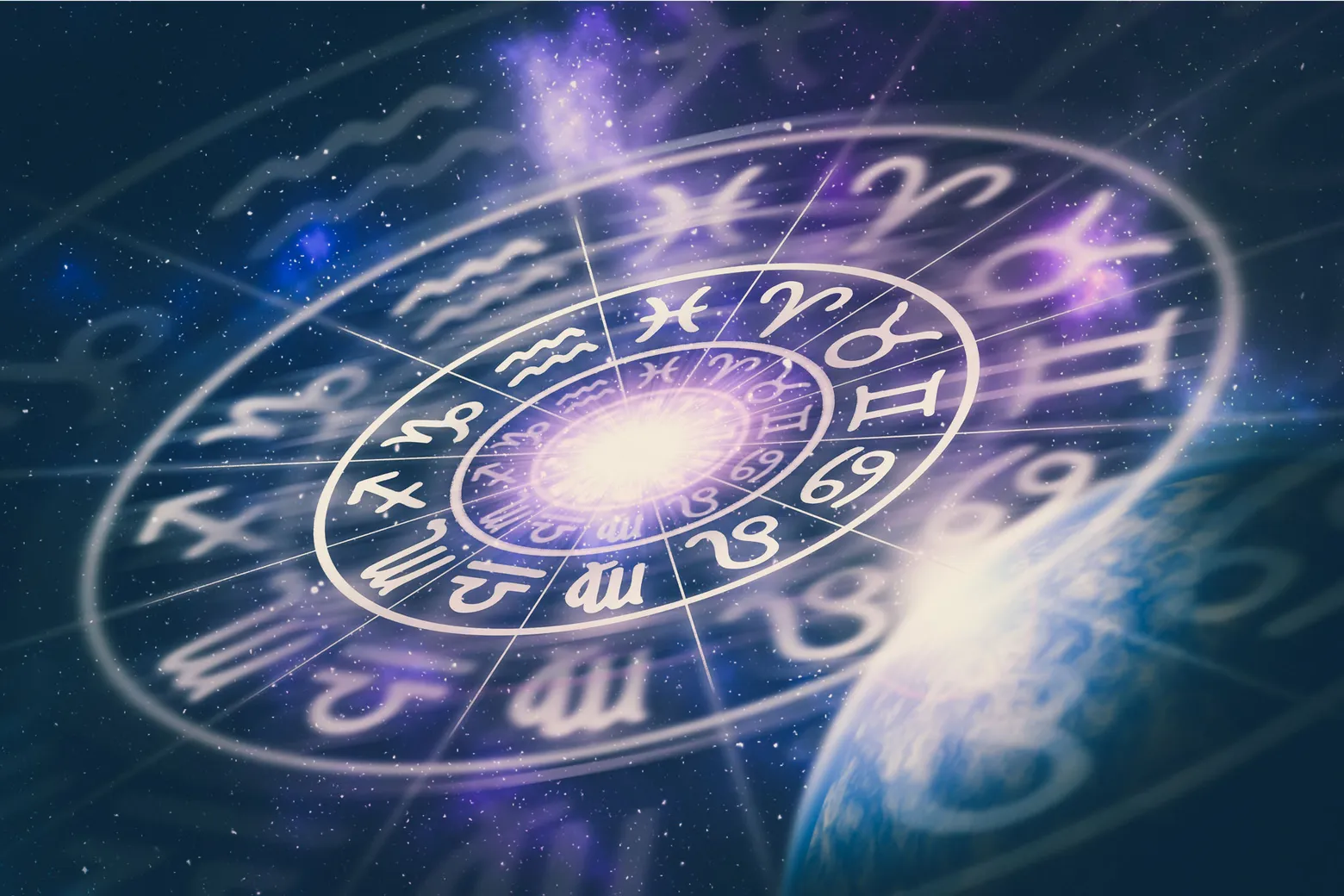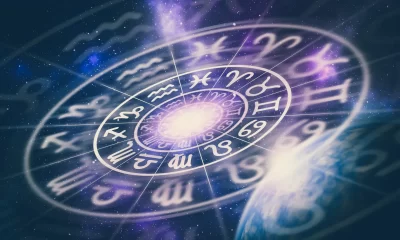ASTRO
Friday the 13th: Unraveling the Myths and Mysteries of the Unlucky Day

Friday the 13th: History, Myths, and Superstitions Behind the Unlucky Day
Few dates in the calendar evoke as much fear and curiosity as Friday the 13th. Often dubbed the most unlucky day, it has become a pop culture and superstition staple. But what is it about this particular day that triggers such dread? Is there any historical basis for its reputation, or is it simply a product of myth and legend?
Table of Contents
In this article, we will explore the origins, myths, and superstitions surrounding Friday the 13th and why this date continues to captivate the imagination of millions worldwide.
The History of Friday the 13th
The roots of Friday the 13th being unlucky are challenging to trace. Both the number 13 and Fridays, independently, have long been viewed with suspicion, but their combination has sparked the infamous superstition. This historical significance adds depth to our understanding of this intriguing date.
- The Unlucky Number 13: The number 13 has been considered unlucky across various cultures for centuries. In Western numerology, 12 is often seen as a “complete” number — there are 12 months in a year, 12 zodiac signs, 12 apostles of Jesus, and 12 labors of Hercules, to name a few. In contrast, 13 disrupts this harmony, creating a sense of imbalance or imperfection.
- One of the most well-known historical references to 13 as an unlucky number dates back to the Last Supper in Christian tradition. According to the Bible, 13 guests sat at the table the night before Jesus was crucified, with Judas, the betrayer, being the 13th person. This association between betrayal and the number 13 has helped cement its negative connotations.
- Friday as an Unlucky Day: Friday has long carried an air of misfortune. In many cultures, Friday was considered an inauspicious day for starting new ventures or traveling. The Christian tradition also plays a role here, as Friday is believed to be the day of the week when Jesus was crucified.
- The combined distrust of the number 13 and Friday forms the foundation of Friday as a uniquely unlucky day. However, the superstition as we know it today didn’t gain widespread popularity until relatively recently.

The Rise of Friday the 13th as an Unlucky Day
While Friday and the number 13 have been seen as unlucky separately for centuries, the specific combination of Friday as a day of misfortune is a more modern creation. This evolution of cultural beliefs is something we can all relate to.
One theory suggests that Friday first gained notoriety in the late 19th century. Author Thomas W. Lawson is often credited with popularizing the superstition in his 1907 novel Friday, the Thirteenth. The book tells the story of a stockbroker who exploits the superstition to create panic on Wall Street, resulting in financial chaos. Lawson’s novel may have tapped into anxieties about 13 and Fridays, but it helped solidify the day’s unlucky status in the popular imagination.
Another historical event often linked to the superstition is Friday, October 13, 1307, when King Philip IV of France arrested hundreds of Knights Templar. Many Templars were later executed or tortured, and some believe this tragic event contributed to the day’s reputation as cursed. Additionally, the number 13 has been associated with other historical events, such as the Apollo 13 space mission, which encountered a life-threatening problem on April 13, 1970, further fueling the superstition.
Myths and Superstitions Surrounding Friday the 13th
Over the years, countless myths and superstitions have developed around Friday, some still believed today. Here are a few of the most common:
- Bad Luck: The most widespread belief is that Friday the 13th brings bad luck. People often avoid making important decisions, starting new projects, or even leaving their homes on this day. It’s believed that any action taken on Friday is more likely to result in misfortune, accidents, or failure.
- Superstitions in Business: Many companies, particularly in Western cultures, take precautions on Friday the 13th. Some refuse to close essential deals or launch products on this date, fearing that the day’s bad luck could affect business outcomes. Some hotels and skyscrapers omit the 13th floor entirely, and airlines occasionally skip row 13 on their planes to avoid making superstitious passengers uncomfortable.
- Travel Hesitations: Studies have shown a notable decline in travel on Friday the 13th, as many people avoid flying or embarking on trips. Some statistics suggest that airlines see a drop in bookings and that people are more cautious about venturing out.
- The Phobia: Friggatriskaidekaphobia: Believe it or not, the fear of Friday the 13th even has a name: Friggatriskaidekaphobia (from the Norse goddess Frigg, for whom Friday is named, and triskaidekaphobia, the fear of the number 13). Those who have this phobia experience intense anxiety or dread on Friday the 13th, sometimes to the point of avoiding any activity altogether.
Pop Culture and Friday the 13th
Beyond superstition, Friday has also become a staple of pop culture, mainly thanks to the long-running horror franchise of the same name. The Friday movies debuted in 1980, introduced the world to Jason Voorhees, a masked, machete-wielding killer, and have since become synonymous with the date. This cultural influence keeps us entertained and engaged with the date.
The films have contributed to Friday’s eerie reputation, associating the day with terror, suspense, and supernatural forces. Each year, horror fans look forward to rewatching the films or attending themed events on Friday, further reinforcing the cultural significance of the date.
Is Friday the 13th Unlucky?
While the myths and superstitions surrounding Friday the 13th are fascinating, no scientific evidence supports the idea that the day brings bad luck. Some research suggests that Friday the 13th may be safer than other days, as people tend to be more cautious and avoid risky activities.
For many, Friday the 13th is simply another day on the calendar, but for others, it continues to hold an aura of mystery and superstition. The fear of Friday the 13th, known as Friggatriskaidekaphobia, is a complex phenomenon that can be attributed to a combination of cultural influences, psychological factors, and individual experiences. Whether you believe in its unlucky power or not, it’s undeniable that Friday the 13th has a unique place in our cultural consciousness.
Conclusion
From its ancient roots in fear of the number 13 to its modern status as a day associated with bad luck and horror films, Friday the 13th has evolved into one of the most intriguing dates on the calendar. While the superstitions surrounding the day are primarily myths, they continue to influence our behaviors and even pop culture.
Whether you choose to stay indoors, avoid major decisions, or treat Friday the 13th like any other day, it remains a fascinating cultural phenomenon that shows no signs of losing its grip on the human imagination. While some may dismiss the superstitions as mere myths, others find them intriguing and even follow certain rituals or precautions on this day. Regardless of your stance, the cultural significance of Friday the 13th is undeniable.
ASTRO
Kundalini Jagran: Awakening the Serpent Power Within

In this article, we will delve into the profound changes thatKundalini Jagran can bring to one’s life, exploring what it is, its significance, and the process of awakening this powerful energy.
What is Kundalini Jagran?
Kundalini is a Sanskrit term meaning “coiled” or “spiral,” symbolizing the latent energy stored at the base of the spine in every individual.Jagran means awakening. Together, Kundalini Jagran represents the activation or rising of this energy up through the seven chakras, or energy centers, located along the spine.

In its dormant state, Kundalini remains coiled like a serpent at the Muladhara chakra (root chakra). When it is awakened, it travels upward through the central channel, called theSushumna Nadi, activating each chakra until it reaches the crown chakra, also known as theSahasrara. This ascent of energy is believed to lead to higher states of consciousness, spiritual enlightenment, and deep inner transformation.
The Importance of Kundalini Jagran
Kundalini Jagran is considered a transformative process, one that opens up profound spiritual insights and allows individuals to connect to the universe on a deeper level. Some of the significant benefits of this awakening include:
- Spiritual Enlightenment: The ultimate goal of Kundalini Jagran is spiritual awakening, where the individual experiences unity with the divine and attains a state of bliss and peace.
- Self-Realization: As the Kundalini rises, it activates various energy centers, leading to a clearer understanding of oneself, emotions, thoughts, and purpose in life.
- Mental Clarity and Creativity: Awakening this energy is said to expand mental capacities, resulting in greater clarity, enhanced creativity, and improved problem-solving abilities.
- Emotional Healing: Kundalini Jagran can help release pent-up emotional blockages, offering emotional healing and balance.
- Physical Health and Vitality: The movement of Kundalini through the chakras is believed to improve physical health, vitality, and the functioning of the body’s systems.
The Process of Kundalini Awakening
Awakening Kundalini energy is not an overnight process. It requires dedication, discipline, and a gradual approach through various practices aimed at purifying the body, mind, and spirit. Here are the primary methods used forKundalini Jagran:
- Kundalini Yoga
Kundalini Yoga is one of the most well-known methods to awaken this energy. It combines physical postures (asanas), breathwork (pranayama), chanting (mantras), and meditation techniques. The idea is to stimulate the dormant energy at the base of the spine and facilitate its rise through the chakras.
- Breathing Exercises (Pranayama): Deep and controlled breathing, such asKapalbhati andAnulom Vilom, are crucial in clearing the energy channels and awakening Kundalini.
- Meditation: Concentrated meditation on the chakras and the breath helps to focus the mind and allow the energy to flow freely.
- Mantras and Chanting: The repetition of sacred sounds like “Om” or specific Kundalini mantras aids in vibrating and awakening different chakras.
- Meditation and Mindfulness
Focusing on mindfulness, silence, and meditation can gradually awaken the Kundalini energy. Meditating on theMuladhara Chakra (root chakra) and visualizing the coiled energy can stimulate the awakening process.
- Shaktipat (Spiritual Transmission)
In the tradition of Kundalini Jagran,Shaktipat is the direct transmission of energy from a realized master to a seeker. A guru who has already awakened their own Kundalini energy can, through a touch or gaze, transfer this energy to a student, initiating their Kundalini awakening.
- Mantra Recitation (Japa)
Mantras, when chanted with focus and devotion, have the power to awaken spiritual energies. Continuous recitation of mantras like“Om Namah Shivaya” or other specific Kundalini mantras can stimulate the dormant energy.
- Kriyas
Kriyas are specific energy-clearing exercises that are designed to purify the energy pathways in the body. When practiced under the guidance of a trained teacher, these kriyas can assist in awakening the Kundalini energy without causing disruptions.
The Stages of Kundalini Awakening
The process of Kundalini Jagran generally occurs in stages, though these can vary from person to person depending on their spiritual progress and practice. The rising energy passes through the seven chakras, each offering unique experiences and challenges:
- Muladhara (Root Chakra): The seat of the dormant Kundalini energy, focusing here strengthens the foundation for awakening.
- Swadhisthana (Sacral Chakra): As the Kundalini ascends, one may experience enhanced creativity, emotional release, and a sense of balance.
- Manipura (Solar Plexus Chakra): At this stage, the individual may feel a surge in self-confidence, willpower, and personal strength.
- Anahata (Heart Chakra): When the energy reaches the heart chakra, it often triggers feelings of unconditional love, compassion, and emotional healing.
- Vishuddha (Throat Chakra): This stage brings a deep sense of inner truth and the ability to express oneself authentically.
- Ajna (Third Eye Chakra): As Kundalini rises to the third eye, it opens the door to intuition, higher perception, and spiritual insights.
- Sahasrara (Crown Chakra): When Kundalini reaches the crown, it results in complete enlightenment, where the individual experiences a state of unity with the cosmos.
Potential Challenges in Kundalini Awakening
While Kundalini Jagran is a deeply transformative process, it’s important to approach it with caution. Awakening this powerful energy without proper guidance can sometimes lead toKundalini Syndrome, which includes physical discomfort, emotional upheaval, and mental disorientation. It’s crucial to be aware of these potential challenges and seek proper guidance to navigate them effectively.
- Physical Symptoms: Some people may experience sensations like heat or tingling in the spine, spontaneous body movements, or unexplainable bodily discomfort.
- Emotional Turmoil: Repressed emotions can surface unexpectedly, causing emotional highs and lows.
- Mental Confusion: Misguided attempts to awaken Kundalini can lead to mental instability or confusion, which is why proper guidance is crucial.
Conclusion
Kundalini Jagran is a sacred journey of self-realization and spiritual awakening. For those seeking deeper truths and a higher state of consciousness, this ancient practice offers profound rewards. However, like any powerful spiritual practice, it requires patience, dedication, and most importantly, proper guidance to ensure a safe and fulfilling experience.
In the end, the awakening of Kundalini energy is not just about spiritual transformation; it’s about realizing your true potential and connecting to the universal consciousness that resides within every being.
ASTRO
2024 Lunar Eclipse: Prepare for Global and Personal Financial Shifts

What is a Lunar Eclipse?
A lunar eclipse happens when the Earth moves directly between the Sun and the Moon, casting its shadow on the Moon. There are three types of lunar eclipses: total, partial, and penumbral. In a total lunar eclipse, the Moon is completely covered by Earth’s shadow, resulting in a reddish hue, often called a “Blood Moon.” This dramatic celestial event has captured human imagination for centuries and has been interpreted through mythologies, superstitions, and, more recently, through the lens of astrology.
Astrologers often view lunar eclipses as moments of change, revealing hidden truths and sparking transformation. These shifts can manifest on both global and individual levels, often related to the Moon’s influence on emotions, subconscious patterns, and financial cycles. With the 2024 lunar eclipse approaching, many are curious about what financial shifts might lie ahead.
Historical Impact of Lunar Eclipses on Markets
Throughout history, some have observed a pattern between eclipses and notable financial changes. While modern science doesn’t directly link lunar eclipses to stock markets or economic performance, astrologers have long viewed them as markers for shifts in collective energy that can indirectly influence financial markets.

Lunar Eclipse
For example, significant lunar eclipses have often coincided with critical events in global economies, such as market crashes, currency fluctuations, or even reforms in financial institutions. The 1929 lunar eclipse occurred just before the Wall Street crash, and the 2008 financial crisis followed a series of eclipses earlier that year. While it’s difficult to attribute these events to eclipses directly, they’re often seen as cosmic triggers that accelerate existing trends or reveal hidden weaknesses in economic structures.
Potential Global Financial Shifts in 2024
With the 2024 lunar eclipse on the horizon, economic forecasters and astrologers alike are paying close attention to what this cosmic event could signal for global finances. As global markets remain volatile due to political tensions, inflation concerns, and the ongoing post-pandemic recovery, the timing of this eclipse might coincide with important shifts.
- Stock Market Volatility: Lunar eclipses are known to stir emotions, and financial markets are no exception. During eclipse periods, market sentiment can swingwildly as investors react to unexpected news or economic data. Some experts predict that we may see increased volatility around the March 2024 eclipse, with sudden market dips or surges as investors re-evaluate their positions.
- Currency Realignments: Global currency markets may also experience shifts, particularly if geopolitical events around the time of the eclipse cause disruptions. With many countries experiencing inflation and shifts in interest rates, the 2024 lunar eclipse could act as a trigger for adjustments in currency values, impacting trade and international finance.
- Technology and Innovation: Eclipses are associated with revelations and new beginnings. In the realm of finance, this could mean breakthroughs in fintech, blockchain, or digital currencies. We may see regulatory changes or new technologies reshaping how people interact with money, possibly leading to the widespread adoption of new financial models.
- Wealth Redistribution and Reform: Eclipses have a reputation for revealing hidden truths and imbalances. In 2024, this could translate to an increased focus on income inequality, taxation, and financial reforms. Governments may introduce policies aimed at redistributing wealth or reforming financial institutions to address growing concerns over economic disparity.
How the Lunar Eclipse Could Impact Personal Finances
While global financial trends can seem abstract, lunar eclipses also have a more personal impact, often prompting individuals to reflect on their financial health. Astrologers suggest that lunar eclipses are times for taking stock of our emotional connections to money and material security.
Here are some ways the 2024 lunar eclipse might influence personal finances:
- Reassessing Financial Goals: Lunar eclipses are often viewed as turning points, offering an opportunity to step back and re-evaluate. You may feel a sudden urge to reconsider your financial goals. Whether it’s budgeting, saving for retirement, or investing in new ventures, the eclipse energy encourages clarity and long-term planning.
- Emotional Spending vs. Practical Saving: The Moon rules our emotions, and during a lunar eclipse, we may become more aware of how our feelings impact spending habits. Some people may notice a tendency toward emotional spending—buying things to comfort themselves in times of stress. The eclipse could bring this to the forefront, urging you to adopt healthier financial habits.
- Unexpected Expenses and Opportunities: Eclipses often bring surprises, both positive and negative. You might encounter sudden expenses, such as medical bills or home repairs. Still, just as likely, you could stumble upon new opportunities, such as a lucrative job offer or investment chance. Be prepared to navigate these shifts with flexibility.
- Time for Financial Cleansing: Much like a total lunar eclipse wipes the slate clean for the Moon, this event can also inspire you to clear out financial clutter. Consider taking this time to declutter your finances, review old debts, organize bills, or even close accounts that no longer serve you. It’s a chance for a fresh start.
Navigating Financial Shifts During the Eclipse
While lunar eclipses are associated with transformation, they don’t spell doom and gloom. Whether you’re bracing for potential global market fluctuations or reevaluating your finances, it’s important to stay grounded and proactive. Here are a few strategies to navigate financial changes during this time:
- Stay Calm in Market Volatility: If you’re an investor, avoid making impulsive decisions based on short-term market swings around the eclipse. Focus on your long-term strategy, and consider consulting with a financial advisor before making major moves.
- Use the Eclipse for Reflection: Take the time to reassess your financial health. Are you on track with your savings? Do you need to adjust your budget?This is an excellent opportunity for financial self-reflection.
- Be Open to New Opportunities: Eclipses often bring unexpected chances for growth. Keep an eye out for investment opportunities, business ventures, or new career paths that align with your long-term goals.
Conclusion
The 2024 lunar eclipse offers more than a mesmerizing display in the night sky. Its timing might signal major global and personal financial shifts, from stock market volatility and currency realignments to personal financial transformations. While these changes can feel unsettling, they also provide an opportunity to reassess, realign, and prepare for a brighter financial future. Whether you’re watching from your backyard or feeling its effects on your wallet, this lunar eclipse is sure to leave a lasting impression.
ASTRO
Understanding Natal Astrology: Unlocking the Secrets of Your Birth Chart

the Secrets of Your Birth Chart: A Guide to Natal Astrology
Natal astrology, also known as birth chart astrology, is a fascinating branch of astrology that delves into the influence of the celestial bodies at the time of your birth. Unlike predictive astrology, which forecasts future events, natal astrology provides insights into your personality, strengths, challenges, and potential life path based on the positions of the planets and stars when you were born. This blog explores the fundamentals of natal astrology, its key components, and how it can offer valuable insights into your life, empowering you with a deeper understanding of your own journey.
What is Natal Astrology?
Natal astrology is the study of how the positions of celestial bodies at the exact moment of your birth impact your personality and life. Your birth chart, or natal chart, is a snapshot of the sky at that precise moment, mapping the positions of the Sun, Moon, planets, and other significant points. Astrologers use this chart to interpret various aspects of your life, including your emotional tendencies, relationship dynamics, career potential, and personal growth.

Key Components of Natal Astrology
- The Birth Chart
- The birth chart is the central element of natal astrology. It is a circular diagram divided into twelve houses, each representing different areas of life, such as relationships, careers, and homes. The chart also includes the positions of the Sun, Moon, and planets within these houses. Astrologers analyze the chart to uncover insights about an individual’s life journey.
- The Zodiac Signs
- The zodiac signs are twelve divisions of the ecliptic, each representing distinct personality traits and characteristics. In natal astrology, the placement of the Sun, Moon, and planets in these signs influences how individuals express themselves and interact with the world. For example, someone with the Sun in Aries might exhibit bold and adventurous traits, while a Moon in Cancer could indicate a nurturing and emotionally sensitive nature.
- The Planets
- In astrology, each planet symbolizes different aspects of life and personality. For example, Venus represents love and relationships, while Mars governs energy and ambition. The positions of these planets in your natal chart reveal how their energies influence various areas of your life. Understanding the planetary placements can provide insights into your motivations, desires, and challenges.
- The Houses
- The twelve houses in a natal chart each correspond to specific areas of life. For instance, the 1st house represents self-image and personal identity, while the 7th house pertains to partnerships and relationships. The planets’ positions within these houses highlight where their energies manifest in your life. Analyzing the house placements can help you understand where to focus your efforts for personal growth and fulfillment.
- Aspects
- Aspects refer to the angles formed between planets in the natal chart. These angles can be harmonious (trines, sextiles) or challenging (squares, oppositions). The relationships between planets through aspects reveal how different parts of your personality interact and influence each other. For instance, a harmonious aspect between Venus and Mars might indicate a balanced approach to love and ambition, while a challenging aspect could signify internal conflicts or obstacles.
How Natal Astrology Can Offer Insights
- Self-Awareness and Personal Growth
- Natal astrology provides a roadmap to understanding your core personality traits and potential life path. By exploring your birth chart, you gain insights into your natural strengths and challenges. This self-awareness can empower you to make informed decisions, pursue your passions, and work on areas that need growth. For example, knowing that you have a strong Mercury influence might encourage you to develop your communication skills.
- Relationship Dynamics
- Understanding your astrological profile and that of your partner can enhance your relationships. Natal astrology reveals compatibility factors, communication styles, and potential areas of conflict. By examining both partners’ birth charts, you can gain insights into how your energies interact and how to navigate challenges effectively. This understanding fosters healthier and more fulfilling relationships.
- Career and Life Path
- Your natal chart can guide your career and life direction. By analyzing the positions of planets related to career and vocation, such as Saturn and the Midheaven, you can gain insights into your ideal career path and areas of professional growth. Natal astrology helps you identify your natural talents and inclinations, allowing you to align your career choices with your authentic self.
- Emotional and Psychological Insights
- Natal astrology offers valuable insights into your emotional and psychological landscape. The Moon’s placement in your birth chart reveals your emotional needs and responses, while aspects between planets can highlight psychological patterns and tendencies. Understanding these aspects can help you navigate emotional challenges and cultivate a deeper sense of self-awareness.
- Timing and Life Events
- While natal astrology focuses on your inherent traits and tendencies, it also lays the groundwork for understanding how external events might influence your life. By examining transits and progressions (the movement of planets in relation to your natal chart), you can gain insights into upcoming opportunities and challenges. This knowledge allows you to prepare and make the most of significant life events.
Practical Tips for Exploring Natal Astrology
- Get Your Birth Chart
- To begin exploring natal astrology, you’ll need your birth chart. You can obtain it from various online resources or consult a professional astrologer. Ensure you have accurate birth details, including date, time, and location, for a precise chart.
- Learn the Basics
- Familiarize yourself with the fundamental components of natal astrology, such as zodiac signs, planets, houses, and aspects. Understanding these elements will help you interpret your birth chart and gain meaningful insights.
- Consult an Astrologer
- While online resources are helpful, consulting a professional astrologer can provide a more in-depth analysis of your natal chart. An astrologer can offer personalized insights and guidance based on their expertise and experience.
- Keep an Open Mind
- Natal astrology is a tool for self-discovery and personal growth. Approach it with an open mind and a willingness to explore various aspects of your personality and life path. Remember that astrology is a complementary tool, not a definitive guide.
Conclusion
Natal astrology offers a rich and detailed perspective on your personality, life path, and relationships. By exploring your birth chart, you gain valuable insights into your inherent traits, challenges, and potential for growth. Whether you’re seeking self-awareness, relationship guidance, or career insights, natal astrology can provide meaningful guidance on your journey. Embrace the wisdom of the stars and use it to enhance your understanding of yourself and navigate life’s complexities with confidence.
-

 FINANCE6 months ago
FINANCE6 months agoHow to Open an Account in mStock: A Step-by-Step Guide
-

 FINANCE6 months ago
FINANCE6 months agoManba Finance IPO: Key Insights & GMP Review
-

 ASTRO7 months ago
ASTRO7 months agoUnderstanding Natal Astrology: Unlocking the Secrets of Your Birth Chart
-

 FINANCE7 months ago
FINANCE7 months agoPNG Jewellers IPO: Check Allotment Status and Key Details Here
-

 TECHNOLOGY6 months ago
TECHNOLOGY6 months agoMobile Phone Insurance: Essential Information to Know
-

 ENTERTAINMENT7 months ago
ENTERTAINMENT7 months agoStree 2 Full Movie Download: Everything You Need to Know
-

 ENTERTAINMENT6 months ago
ENTERTAINMENT6 months agoDevara Part 1 Set to Roar with ₹140 Crore Opening—Can It Topple Jawan and Animal
-

 AUTO6 months ago
AUTO6 months agoMaruti Best Car Under 10 Lakh: Top Picks for Every Budget
